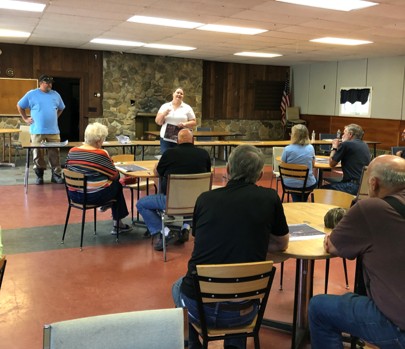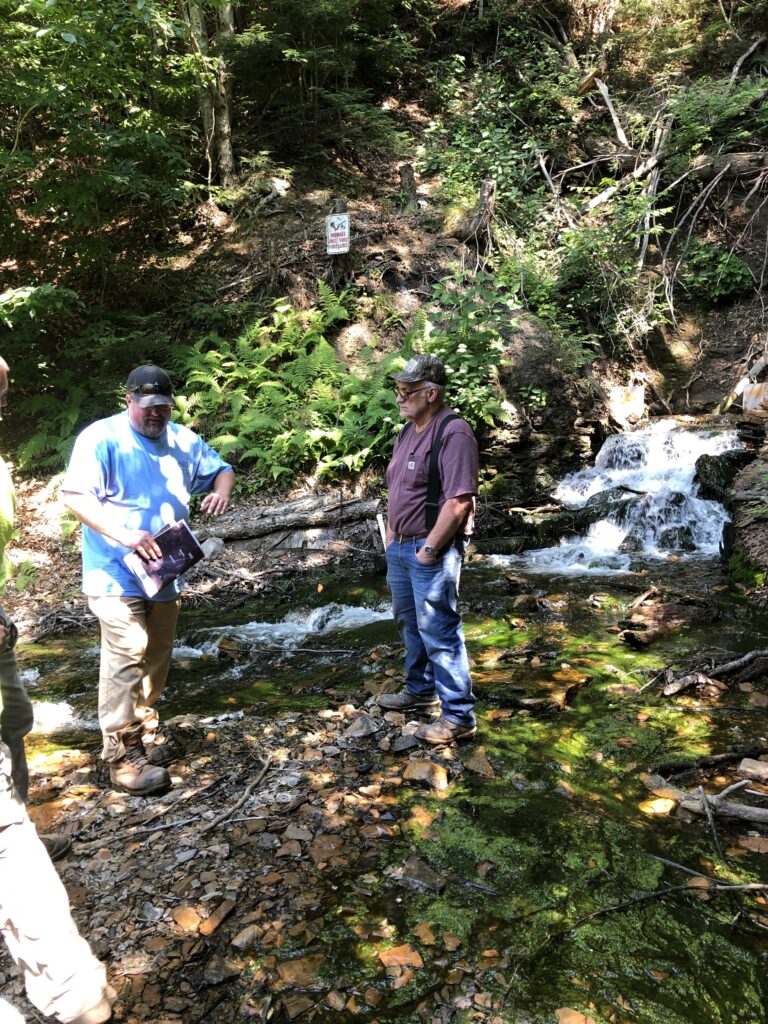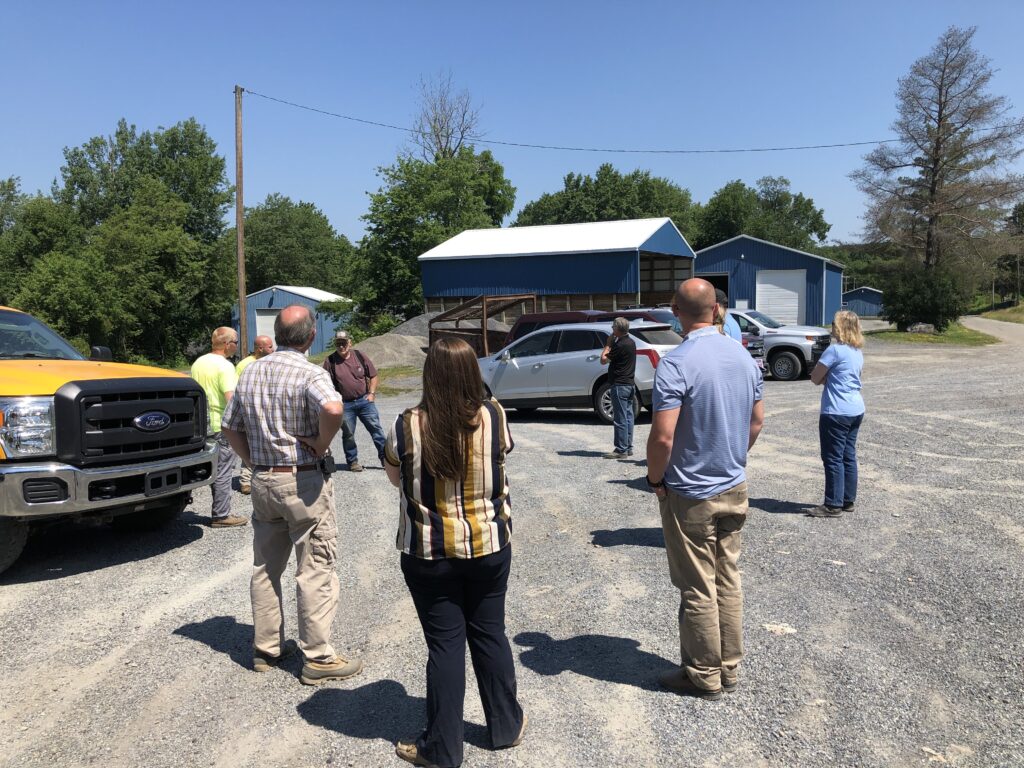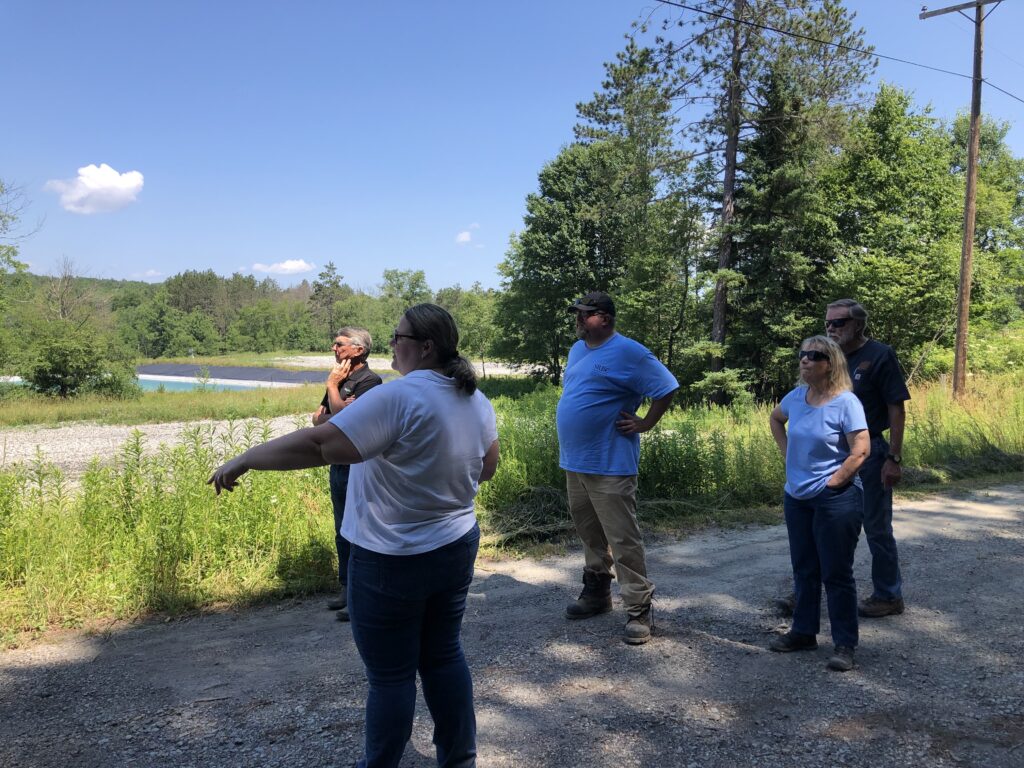The active treatment system that will be cleaning up abandoned mine discharge (AMD) from Coal Creek, Fall Brook, and Morris Run will have pipes moving water to the plant for treatment and then back to the streams for release through three municipalities. Recently, representatives from those municipalities and Tioga County were given an overview of the project concept and then visited several sites that will be used in the Tioga River Mine Drainage Treatment System.

The group began in the community room at Island Park for the overview.
The Susquehanna River Basin Commission (SRBC) and their engineers from Kleinfelder explained the current plan for how the water would be collected, conveyed to the treatment plant, and then how it will get back to the streams.
After the overview and some questions the group headed out to see some of the sites being considered for pump stations.
The first stop on the tour was at the largest discharge, the one on Coal Creek. Many members of the group had never seen the discharge before, only heard about it. While the flow was lower than normal, it still impressed many of the attendees with the volume of water coming out of the hillside.
The consultant explained that the entry had collapsed, but had once been the “man entrance” to the mine. After the mining was complete, the entrance had been sloped to make it easier for the water to flow out and other modifications were made to help de-water the area of the mine that was being worked.

The group then walked down the road to see a potential location for a pump station that will help move the water from the discharge to the treatment plant. The site is along a well-used road. Discussions included known utilities (the consultants will be doing a formal review) and the depth the utilities are set at, as well as conversations related to plowing snow. There will need to be air vents along the lines, and the consultants wanted to ensure the vents won’t damage snow plows or be damaged by the plows.

The next stop was Morris Run. The village is named after its stream which is AMD impacted. There are two discharges close together here. These two will be captured and brought together before being conveyed to the treatment plant.

Fall Brook was next. There is a passive treatment system currently treating some of the water from Fall Brook. In a passive treatment system the water flows through a series of limestone treatment cells or ponds. The water slows down and flows through the limestone increasing the pH which allows heavy metals to settle out. The passive system will stay in place and continue to operate with a set volume of water. The flow above that set volume will be directed to the active treatment plant.

The last stop on the tour was the proposed location for the actual active treatment plant. Here questions related to traffic patterns were discussed. There will be materials brought in frequently to keep the plant operating 24 hours a day, 7 days a week, 52 weeks a year, for years and years.
Now SRBC and the consultants will begin following up with each of the municipalities and discussing details. These detailed discussions will inform the next phase of planning and design. It’s anticipated the next draft design will be presented to the officials in October.
The excitement about a cleaner Tioga River is building!

